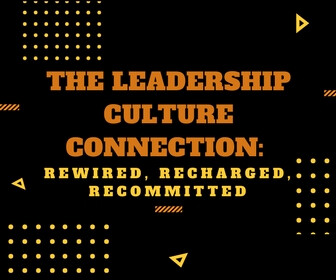We believe that providing a simple explanation for a complex concept can show how school leaders, both in formal and informal settings, can bring change to a school’s culture.
All schools change over time, they can change for the better or worse. Changes are usually impacted by each adult’s capacity to change themselves. If most people in the school building want to change (improve) then that change will happen easier than in buildings where most people are unwilling or scared to change. The question then becomes, why would anyone not want to improve? Now we can see the power of culture.
The culture of the school may define improvement as working more, working harder, or simply doing things you don’t really want to do. Which, gives unwritten permission to those in that setting to not try very much, to let things fail, then, use that as evidence for future attempts at innovation.
Or, the culture of the school may define improvement as caring more, being positive more often, and seeking new ways to satisfy your passion for teaching. In this setting, people will test their capacities and let failures be steps forward.
People shape the culture, and the culture shapes the people. Knowing this makes the notion of professional development more accessible. The best PD is probably down the hallway, or maybe in a neighboring school. The only way to improve a school is to hire better teachers, or improve the ones you have. Teachers change (experiment with) their teaching when they hear from a colleague they respect that what they are doing works and that it is worth the effort. However, the culture will guide those conversations, determining who can talk to whom about what. In some schools these conversations are signs of weakness. In better schools, these conversations are expected and reinforced.
The difficult part of changing/shaping/moving a culture is the level of commitment that is necessary. This is a process that needs daily attention for the better part of 3 to 5 years. We can start today with changes in the climate, but for any changes to be adopted, and become part of who we are, there will need to be a constant drumbeat. There will be many moments when the culture results in a whisper in someone’s ear (someone people choose to listen to) that something isn’t working. If your informal teacher leaders don’t like any type of change, it will die. If after a long period of time you still notice the discomfort of the change, you will find a way to get rid of the discomfort, even at the cost of getting better. This typically happens with the development of cliques and subcultures – a few negative teachers who become organized and divisive.
Subcultures can be the problem, or the solution. People will gather around a problem and once they find a working solution they will bond as a group, solving future problems using the same recipe, good or bad. We challenge school leaders to purposefully build their own subculture of the best teachers, then let it become the next culture. This is much easier said than done and it could get messy without some finesse. However, starting with the best teachers and the new teachers can help accelerate the process and increase the likelihood of a positive long-term impact.
People will try to get rid of the discomfort even if it means not solving the problem. If getting better is perceived as a problem then it will not work. For example, if you are on a diet or trying to get into shape, and there are designated “days off” that you look forward to when you can eat anything or be lazy, then all you have done is changed some routines. If you value opportunities to compromise your vision, then it will never become part of who you are. This is what some cultures try to do; some cultures convince you that those days off are rewards for suffering through the changes.
It is through a strong commitment that people are able to make permanent changes in their lifestyles. And teaching is a lifestyle. In collaborative school cultures people accept the vision as the new normal. They don’t wait for it to arrive. Here is where the culture may result in a whisper in teachers’ ears saying, “that was cool, it made a difference.” When this happens it allows all of the teachers to become more like the best teachers. This can enable significant growth in a culture and thus in a school.
In some schools, the culture provides a sense of nervous adventure, reminding everyone how that first-year excitement felt. In some schools, the culture creates anxiety, which can provide excuses as to why we are probably as good as we can get. Nervousness, anxiety, …two sides of the same coin, a fine line. Leaders need to know what commitment looks like in their schools, and protect it.
That is where we are right now. So how can we help moving forward? We’re listening.








